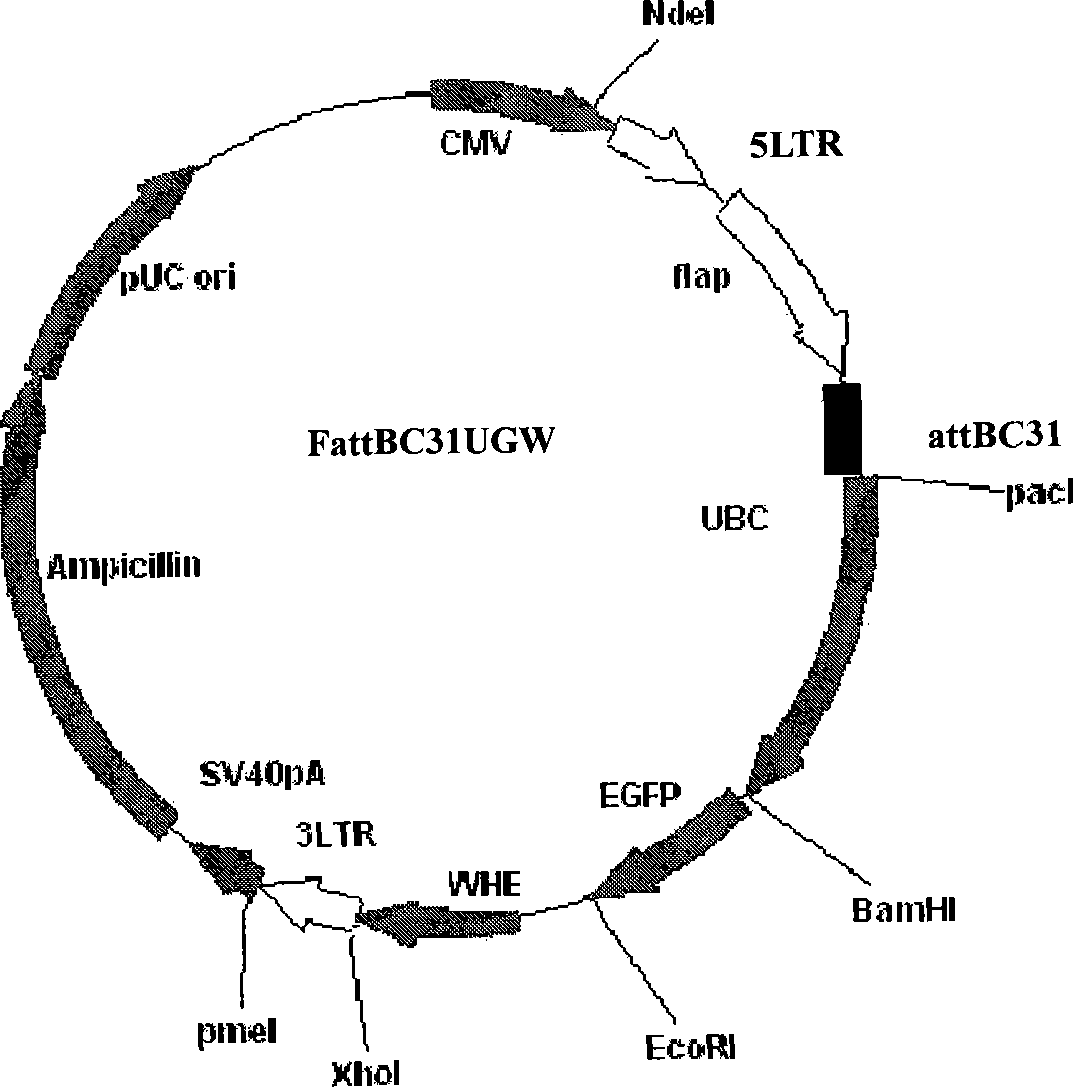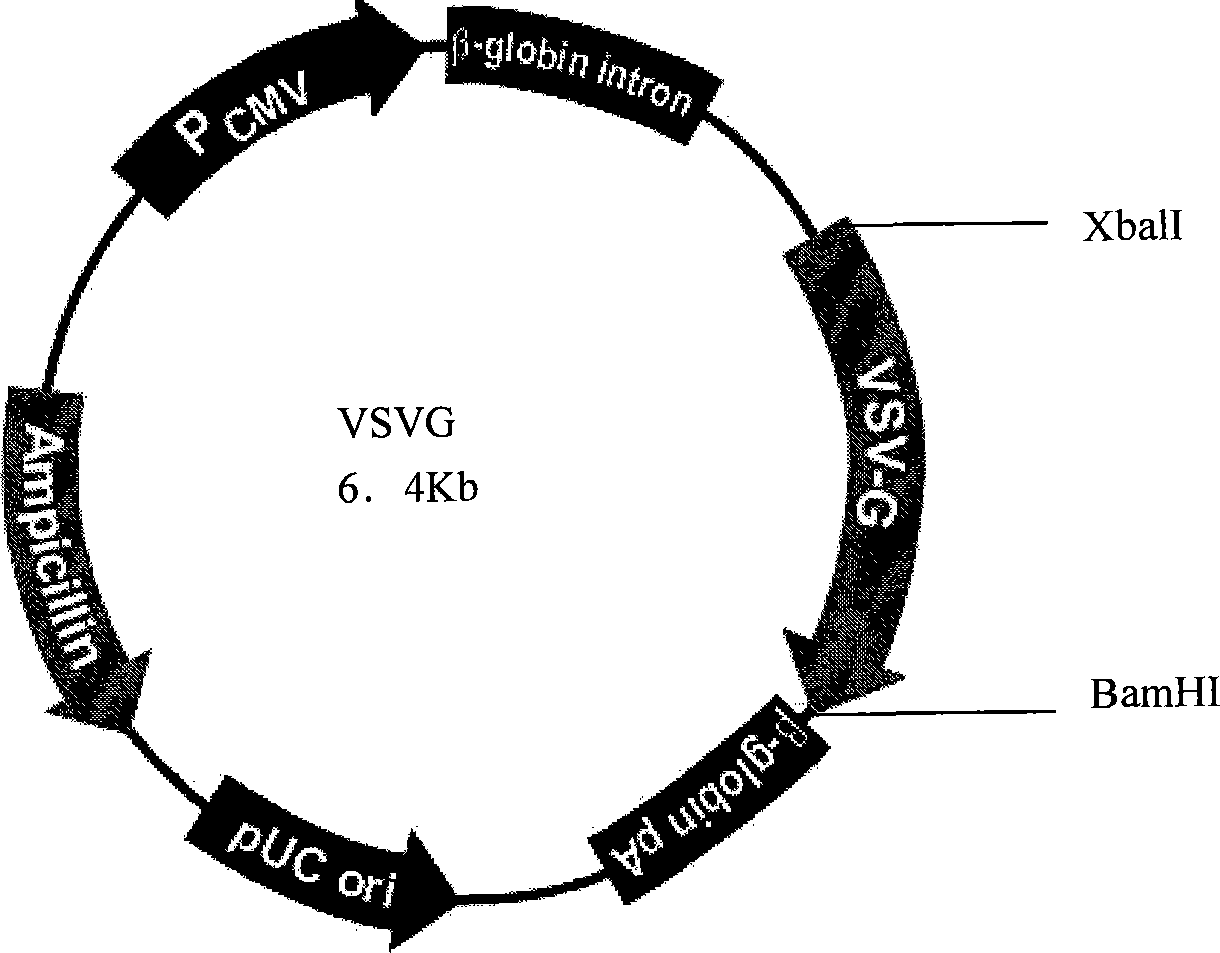Site-specific integration retroviral vector system and preparation thereof
A lentiviral vector and site technology, applied in the field of genetic engineering, can solve problems such as hindering the application of lentiviral vector system and insertion mutation, and achieve the effect of overcoming insertion mutation, inhibiting gene therapy, and avoiding toxicity
- Summary
- Abstract
- Description
- Claims
- Application Information
AI Technical Summary
Problems solved by technology
Method used
Image
Examples
Embodiment 1
[0036] Example 1 Preparation method of novel lentiviral packaging vector CMVΔ8.9-D64N / D64N
[0037] Synthetic oligonucleotide sequences D64N, F-5-TATGGCAGCTAAATTGTACACATT-3, D64N, R-5-AATGTGTACAATTTAGCTGCCATA; D116NF-5-ACAGTACATACAAACAATGGCAGC-3 and D116NR-5-GCTGCCATTGTTTGTATGTACTGT-3, using the plasmid CMVΔ8.9 as a template, using directed mutagenesis The kit was used for directional mutation, enzyme digestion identification, and sequence analysis was correct. CMVΔ8.9-D64N / D116N was obtained.
Embodiment 2
[0038] Example 2 Preparation of site-specific integration lentiviral vector
[0039] Synthesize the ATTB oligonucleotide sequence 5-ATAATCGGTACCGGGTGCCAGGGCGTGCCCTTGGGCTCCCCGGGCGCGTACTCCATACTAGTTT-3 with the KpnI / speI enzyme cutting site. After annealing and digestion, it is cloned into the CMVC31 plasmid to obtain the CMV-ATTB-C31 plasmid. The coding sequence of Attb-C31 integrase was amplified, the primers used contained pacI enzyme cutting site, and the PCR product was recovered after enzyme cutting.
Embodiment 3
[0040] Example 3 Preparation of site-specific integrative lentivirus packaged by plasmid CMVΔ8.9-D64N / D64N
[0041] The FattbC31UGW vector was mixed with the packaging construct plasmid CMVΔ8.9-D64N / D64N and the envelope plasmid (VSVG) at a mass ratio of 2:1:1. Use liposome LipofectamineTM to transfect on 293T cells, observe under a fluorescent microscope after 24-48 hours, collect the virus supernatant after a large amount of fluorescence appears, and collect the collected virus supernatant after concentration for equipment or use immediately. Recombinant lentivirus activity During the measurement, the concentrated virus stock solution was diluted in different proportions, and the fluorescence count was performed under a fluorescence microscope after infecting the cells for 48 hours to determine the titer. FUGW vector served as a control. The results showed that the site-specific integration lentivirus titer was 6.8*10 -7 TU / ml.
PUM
 Login to View More
Login to View More Abstract
Description
Claims
Application Information
 Login to View More
Login to View More - R&D
- Intellectual Property
- Life Sciences
- Materials
- Tech Scout
- Unparalleled Data Quality
- Higher Quality Content
- 60% Fewer Hallucinations
Browse by: Latest US Patents, China's latest patents, Technical Efficacy Thesaurus, Application Domain, Technology Topic, Popular Technical Reports.
© 2025 PatSnap. All rights reserved.Legal|Privacy policy|Modern Slavery Act Transparency Statement|Sitemap|About US| Contact US: help@patsnap.com



